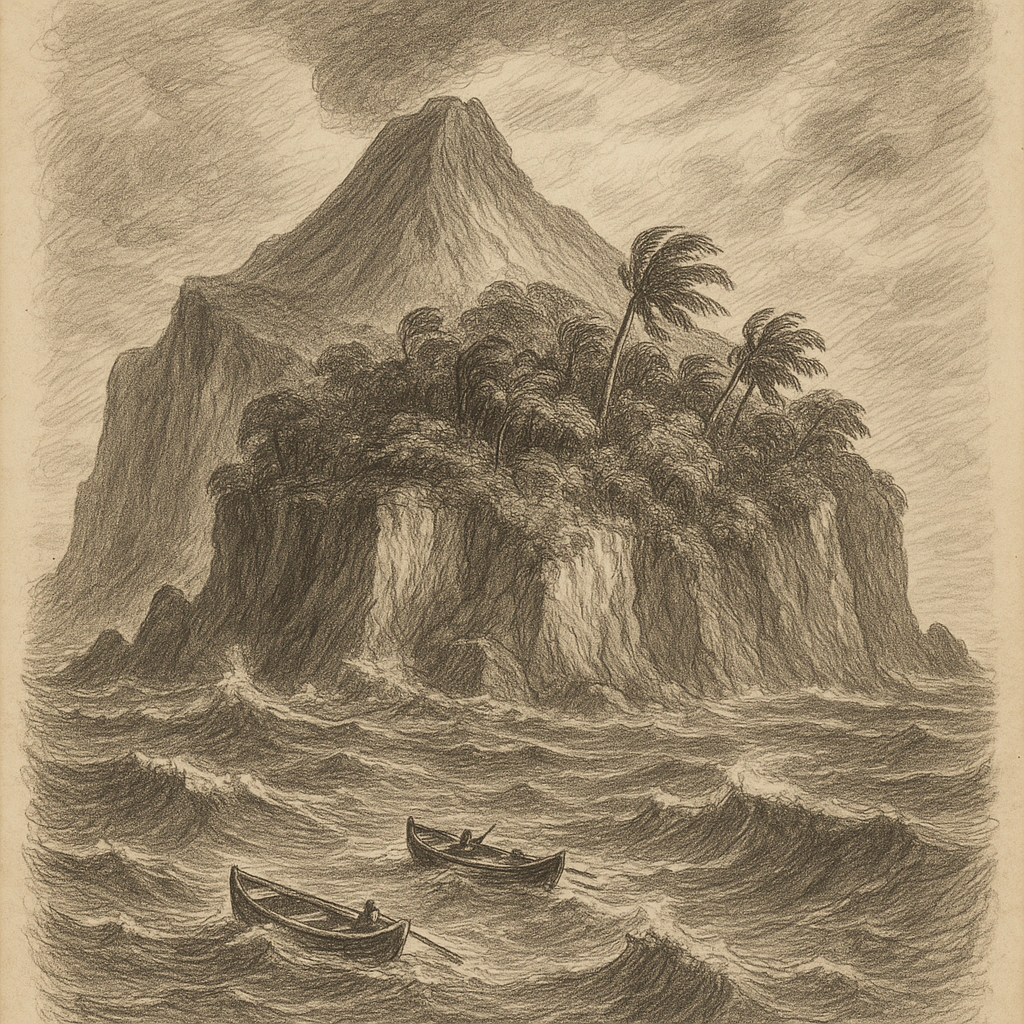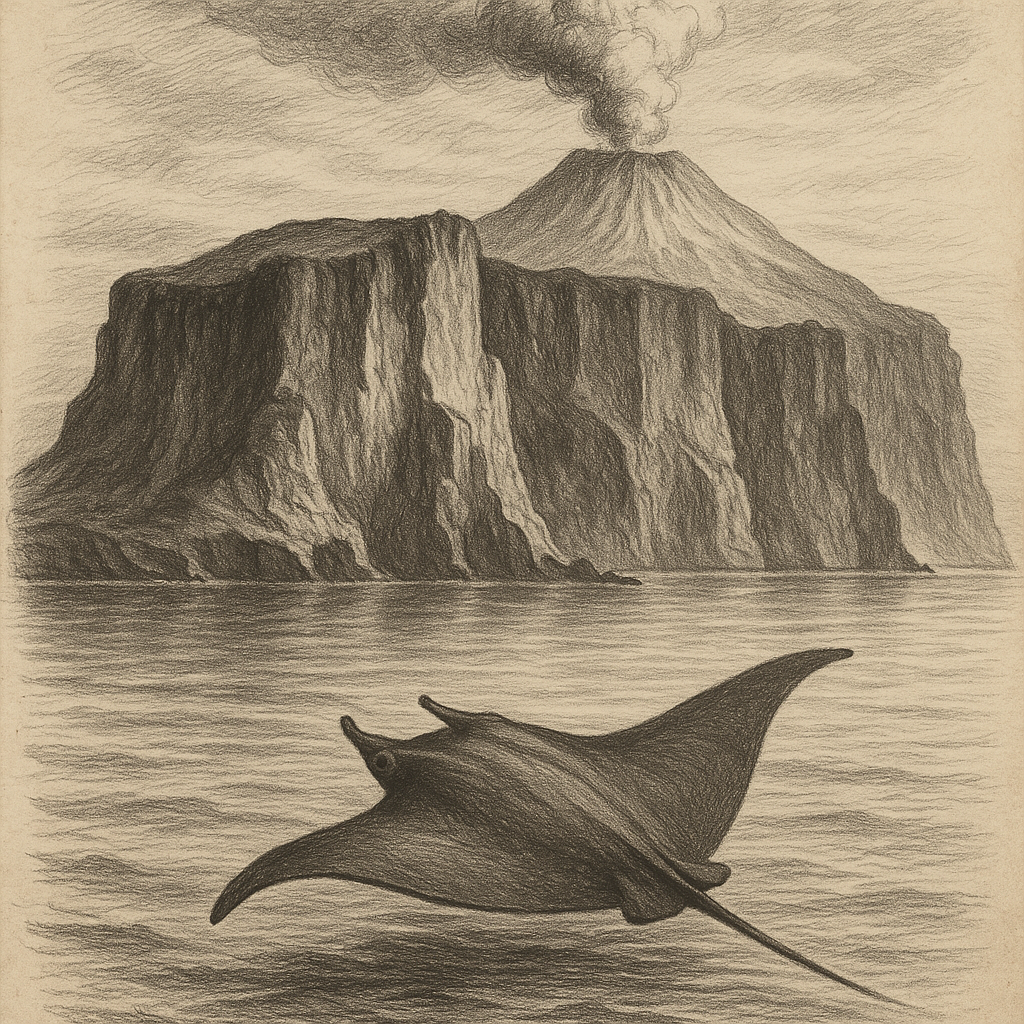Ata Island: The Forgotten Island of the South Pacific
Ata Island, also known as ʻAta or Pylstaart Island, is a remote and uninhabited island situated in the southern reaches of the Tonga archipelago in the South Pacific Ocean. With a mysterious past, cultural significance, and ecological richness, this rugged island remains shrouded in history and intrigue. Once home to a small Polynesian community, Ata Island today stands as a virtually inaccessible and seldom-visited landmark with a story to tell.
Location and Geography
Ata Island lies approximately 160 km (100 miles) south of Tongatapu, the main island of Tonga. It is one of the southernmost islands in the Tongan chain and is geographically isolated from the other inhabited areas of the country. The island covers roughly 1.6 square kilometers and rises steeply from the surrounding sea to a height of about 355 meters (1,165 feet), making it a dramatic feature in an otherwise remote and vast portion of the Pacific Ocean.
The steep cliffs and rocky landscape of Ata Island were formed by volcanic activity, and like many islands in the region, its origins are linked to the tectonic movements along the Pacific Plate. The island has no natural harbors, and its coastline is largely inaccessible due to sheer volcanic rock faces. Dense, tropical vegetation dominates the central plateau, while strong ocean currents and frequent storms further isolate the island from maritime visitation.
History and Human Presence
Although now uninhabited, Ata Island has a storied past that once included human settlement. For hundreds of years, Polynesians lived in a small community on the island, with a subsistence lifestyle that revolved around fishing and cultivation. The community was largely self-sufficient despite the island’s limited resources and isolation.
Everything changed in the mid-19th century. In 1863, Peruvian slave traders raided Ata Island, abducting almost the entire male population and many others who were subsequently taken to work against their will in South America. This tragic event led the remaining inhabitants to abandon the island and relocate to the main island of ʻEua. Since then, Ata Island has remained uninhabited, its forests slowly reclaiming the traces of its tragic human history.
The island gained some attention again in the 20th century when it was considered as a potential site for agricultural settlement, but the rugged terrain and lack of safe anchorage rendered those plans unfeasible.
Ecology and Environment
Thanks to its long-standing isolation and minimal human impact for over 150 years, Ata Island has developed an ecosystem that holds significant ecological value. The island features a mix of tropical and subtropical vegetation, including dense canopies of forest. Despite its small size, Ata is home to various endemic and migratory species, particularly seabirds, which use its cliffs and trees for nesting.
As with many Pacific islands, Ata briefly suffered from attempts to introduce non-native species during the early 20th century, including goats and pigs. These animals had a negative impact on the native vegetation, and conservation efforts in recent decades have focused on eradicating invasive species to safeguard the fragile ecosystem.
Given its remoteness, Ata has largely escaped the large-scale human impact experienced by more accessible islands. This makes it a site of scientific interest for studies on reforestation, ecosystem resilience, and the impact of invasive species removal. However, access remains limited, and no permanent research outposts exist on the island.
Interesting Facts
Ata Island features several fascinating characteristics that distinguish it from other South Pacific islands:
– In 1966, a remarkable story of survival brought the island into international headlines when six Tongan schoolboys were shipwrecked on the island after their fishing trip went awry. They survived on the island for over 15 months by building shelters, setting up a garden, and collecting rainwater—demonstrating extraordinary resilience and cooperation. Their story was widely compared to the fictional “Lord of the Flies,” but with a far more hopeful and humanistic outcome.
– The island’s steep terrain and high cliffs have made safe landing attempts extremely difficult. Approaches to Ata can only be made during ideal weather conditions, and even then, only small boats can hope to land safely.
– Due to its natural isolation and undisturbed maritime waters, the marine environment around Ata Island is considered one of the more pristine eco-zones in the Tonga region. Coral reefs and large pelagic marine life are plentiful in the surrounding waters, making it an ideal—if inaccessible—location for marine biodiversity assessments.
Legends and Cultural Significance
Ata Island holds a notable place in Tongan oral tradition and cultural lore. According to legend, Ata was created by the gods as a resting place for spirits journeying between earthly and heavenly realms. Its remote location, rugged landscape, and absence of human habitation have contributed to its aura of mystique and reverence.
One frequently told legend speaks of the spirit of an ancient chief who was said to reside in the forested highlands of Ata, guarding its natural purity. Locals on nearby ʻEua and Tongatapu sometimes refer to the island as “nā fanga ʻo e laumālie” – “the cradle of spirits.” This belief helped fuel the taboo against returning to live on Ata after its abandonment following the slave raids.
Even today, Ata is approached with cultural caution. Tongan seafarers traditionally offer prayers when passing by, as a show of respect to the ancestral spirits believed to inhabit the island. In Tongan cosmology, islands such as Ata are not merely landmasses; they are imprinted with spiritual significance that ties people to their history, identity, and collective memory.
Access and Protection
Due to its remote location and difficult access, Ata Island is not open to tourism and has no infrastructure to support visitors. The Tongan government recognizes the cultural, historical, and ecological significance of the island and has taken steps to limit unauthorized visitation.
Access to Ata requires special governmental permission, often only granted to research teams or conservation groups. Even for seasoned sailors, landing on the island remains a rare and challenging feat due to its wild seas and steep terrain.
Plans have occasionally surfaced to incorporate Ata into broader marine protection zones or to establish biological monitoring projects on the island. However, logistical challenges and the absence of consistent resources have so far limited long-term engagement.
Conclusion
Ata Island is a testament to the wild, untamed beauty of the Pacific and the resilience of nature in the absence of human habitation. With its haunting history, biological richness, and spiritual significance, the island captures the imagination as a place both physically and symbolically distant from the modern world. While few may ever set foot on Ata, its story continues to inspire those drawn to the remote and the forgotten corners of the earth.



